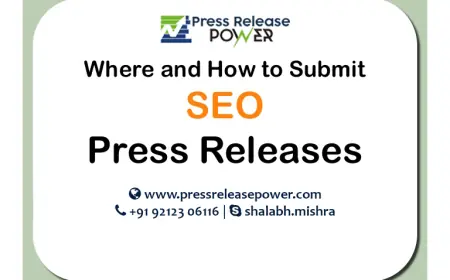Top Tools Every Musician Should Know for Digital Success
In today’s fast-paced digital landscape, musicians have access to countless tools and platforms that can amplify their reach and build their careers. From branding essentials to music-sharing platforms, these resources help artists not only create but also promote their music effectively. Whether you’re an independent artist or part of a band, knowing which tools to use can make all the difference. This guide explores the top digital tools and resources every musician should consider mastering for long-term success.
1. The Power of Artistic Branding
Artistic branding is the cornerstone of any successful music career. It’s more than just a logo or stage name; it’s the entire identity that makes an artist unique. Building artistic brands involves defining your style, crafting a compelling story, and ensuring consistency across all platforms.
A great example of effective branding is creating a cohesive visual identity that matches the tone and feel of your music. This consistency helps fans connect with you on a deeper level, making your music memorable. Platforms like Instagram and Canva are excellent tools for designing visuals that resonate with your audience.
2. Getting Playlisted with Spotify Pitching
Spotify is one of the largest music streaming platforms in the world, and getting your music on popular playlists can skyrocket your visibility. Submitting a strong spotify pitch is crucial for this. A pitch should highlight the story behind your music, your inspiration, and what makes your track stand out.
The key to a successful Spotify pitch lies in timing and authenticity. Submit your pitch well before your release date and ensure your narrative feels genuine. Many artists have experienced a surge in streams and followers after being featured on curated playlists.
3. Leveraging YouTube for Music Promotion
YouTube remains a powerhouse for music promotion, offering artists a chance to showcase their talent visually and reach a global audience. Knowing how to upload YouTube music effectively is a skill every musician should master.
When uploading music, pay attention to your video title, description, and thumbnail. Use SEO-friendly keywords to make your content discoverable. Additionally, consider creating a mix of content—lyric videos, behind-the-scenes clips, and live performances can keep your channel engaging and dynamic.
YouTube Analytics is another invaluable tool. It helps you understand your audience’s demographics, watch time, and engagement levels, enabling you to tailor your content accordingly.
4. The Role of Album Artwork in Music Success
Album artwork isn’t just a visual add-on; it’s a key element of your music’s identity. Fans often associate a song or album with its cover, making it vital to understand what is album artwork and its importance.
Great album artwork tells a story, reflects the mood of the music, and grabs attention. Tools like Adobe Photoshop, Canva, and Procreate are excellent for designing striking visuals. If you’re not confident in your design skills, consider hiring a professional artist who can bring your vision to life.
Remember, your artwork is often the first impression listeners have of your music, so it’s worth investing time and effort into creating something impactful.
5. Building an Audience on SoundCloud
SoundCloud has been a launchpad for countless successful artists. To make the most of this platform, you’ll need to create an account for SoundCloud and optimize your profile.
Start by uploading high-quality tracks and tagging them with relevant keywords. Engage with your listeners by responding to comments and reposting other artists’ work. SoundCloud’s algorithms favor active users, so the more you engage, the more visible your music becomes.
Another advantage of SoundCloud is its community-driven nature. Collaborating with other artists on the platform can help you expand your reach and grow your fanbase organically.
6. Social Media as a Promotional Tool
Social media platforms like Instagram, TikTok, and Twitter are indispensable for today’s musicians. They allow you to connect with fans, share updates, and promote new releases. Focus on creating engaging content that aligns with your brand.
Short videos, live streams, and behind-the-scenes glimpses are particularly popular. For instance, TikTok trends can quickly turn your song into a viral hit if you participate actively and creatively.
7. Email Marketing for Musicians
While social media is crucial, email marketing offers a more direct way to communicate with your fans. Platforms like Mailchimp and ConvertKit help musicians send newsletters, announce tour dates, and promote new releases.
Your email list is a valuable asset because it’s a space you control. Unlike social media algorithms, you have full access to your audience whenever you need it.
8. Collaborating with Other Artists
Collaboration is another powerful tool for growth. Working with other artists exposes you to their fanbase while enriching your creative process. Platforms like SoundBetter and Kompoz make finding collaborators easier.
Collaborations can range from co-writing songs to featuring each other’s tracks. This not only diversifies your music but also helps build connections within the industry.
Conclusion
The digital age offers musicians unprecedented opportunities to grow their careers. By leveraging tools like Spotify for playlisting, YouTube for promotion, and SoundCloud for community building, you can expand your reach and connect with a broader audience. Combining these platforms with strong branding and creative content ensures a well-rounded strategy for success.
Start exploring these tools today and see how they can transform your music journey. With dedication, creativity, and the right resources, the possibilities are endless.
What's Your Reaction?
 Like
0
Like
0
 Dislike
0
Dislike
0
 Love
0
Love
0
 Funny
0
Funny
0
 Angry
0
Angry
0
 Sad
0
Sad
0
 Wow
0
Wow
0






















































